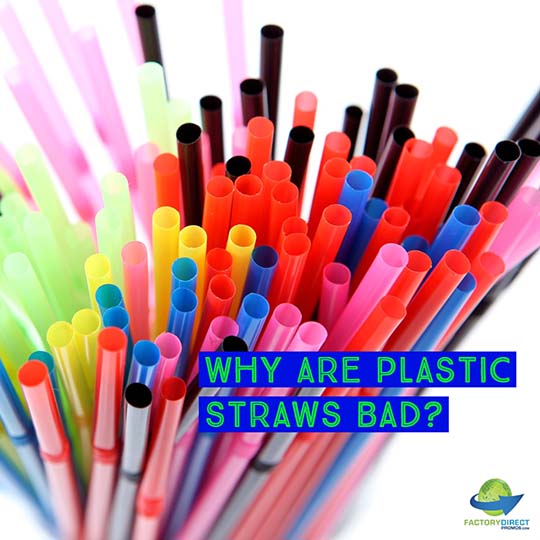Why Are Plastic Straws Bad?

Making Sense of Straws’ Bad Behavior
Plastic drinking straws were introduced, quickly took over all over and became ubiquitous. But many municipalities are now taking a stand against plastic straws. Several cities and towns have banned plastic drinking straws because of the environmental impact. Find out why plastic straws became so commonplace and popular and why are plastic straws bad.
Addressing a Need
Like most things, plastic drinking straws came about to address a need. Drinking straws in one form or another have been around for centuries. People would use different types of grasses or reeds until the paper drinking straw was created in the late 19th century. Paper drinking straws later gave way to plastic straws.
Straws are convenient because they allow people to slowly sip a beverage. Plastic straws make it easy to drink from a cup with a lid, minimizing spills and messes when on the go. This convenience has made plastic drinking straws an in-demand item with hundreds of millions used every day just in the United States.
Straws are especially important for those with disabilities. Straws, in many cases, make people more able to drink independently and easier than without them. This is a huge need that straws fill.
Drawbacks of Plastic Straws
While plastic straws have a lot to offer, they also cause a variety of problems. Lately, as these problems have come to light, many consumers and businesses are finding that the problems caused by plastic straws outnumber the advantages.
Plastic straws are seldom recycled. They are in fact recyclable, but the lightweight construction that makes them so handy to use is also what makes them difficult to recycle. Plastic straws routinely fall through the sorting equipment, meaning that even if a consumer tries to do the right thing and recycle their plastic straws, the straw is likely to not be recycled.
Environmental Impact
Plastic straws are a leading item in litter. From being abandoned on beaches to being tossed in over-flowing garbage cans, plastic straws have a tendency to end up in our oceans. Once in the water, the straws will be tossed around until they break apart into smaller and smaller pieces of plastic.
At any time this plastic debris can be consumed by marine animals. Larger pieces of plastic can pose a choking hazard or harm the animal’s health in other possibly fatal ways. Smaller pieces of plastic, known as microplastics, are much more likely to be consumed and have a negative impact on the entire food chain.
Plastic Straw Alternatives
The backlash against mounting plastic trash and the environmental impact of plastic straws have led consumers to seek out plastic straw alternatives. Many consumers, especially the disabled, are starting to carry their own reusable straws.
From going back to biodegradable paper straws, to more durable options made from other materials, consumers now have a choice.
Later this week, we’ll delve more into the variety of options consumers have when it comes to selecting reusable drinking straws.
Stay in the Know
At Factory Direct Promos, we have a strong commitment to quality and sustainability. Our entire business is built around providing high-quality reusable products to help your business promote your brand. We even carry eco-friendly straws!
Stay connected and learn more about how our customized promotional products can help your business, as well as how these same products can help the planet by subscribing to our newsletter.
